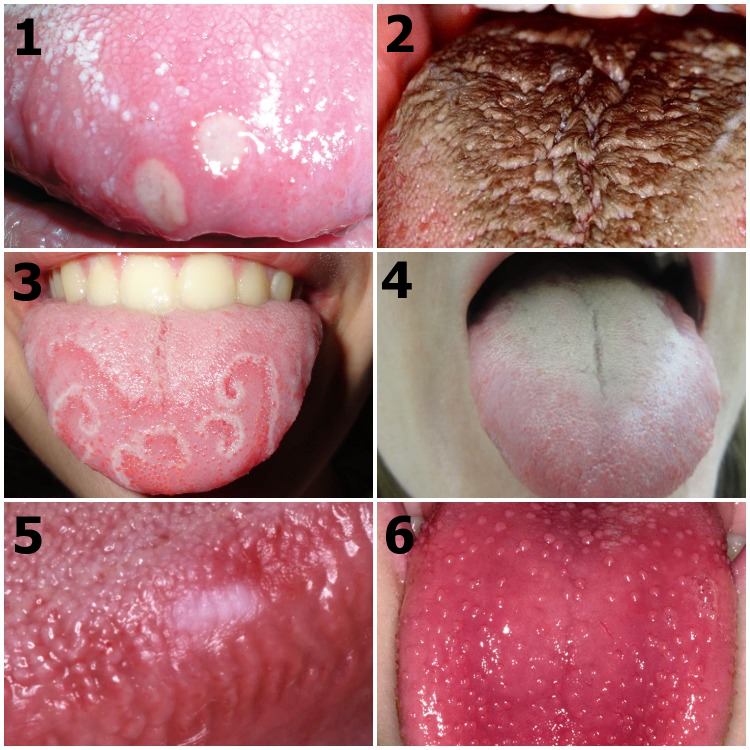Lesion Patch Red Tongue White


Geographic tongue is sometimes referred to as migratory because its location and pattern of presentation tend to change. The appearance of geographic tongue may fluctuate within hours, with lesions presenting for days or months — or even longer. 6 This condition has a strong association with fissured tongue.
Red and white lesions of oral. 86 Tricks To Ace Organic Chemistry Pdf. Of the posterior part of the dorsum of the tongue. 2) Lesion has a oval. The clinical observation of a white or red patch. Signs and symptoms of geographic tongue may include: Smooth, red, irregularly shaped patches (lesions) on the top or side of your tongue. Transformers Prime Full Episodes In Hindi In Full Hd more.
4 Although geographic tongue is most often painless, patients can present with discomfort and a burning sensation. On occasion, candidiasis also may coexist with geographic tongue. 10 The diagnosis of geographic tongue and its treatment are based on the patient’s medical history and clinical examination. On rare occasions, a biopsy is required to confirm a histologic diagnosis. 6 Because the majority of patients are asymptomatic — and because geographic tongue is chronic or intermittent — no treatment is generally indicated. It is also possible that geographic tongue may not recur after the initial episode. To alleviate anxiety, patients often need to be assured that it is a benign process.
6 Treating geographic tongue with topical corticosteroids, topical anesthetic agents and antihistamines may help alleviate symptoms, but no specific therapy has demonstrated consistent success. 5,6 The differential diagnosis for geographic tongue includes erythroplakia or candidiasis. Other conditions, such as oral lichen planus, lupus erythematous and drug reactions, can occasionally mimic this condition. A biopsy may be needed to confirm the clinical diagnosis when the clinical presentation is not readily apparent.
Due to the close association of geographic tongue in psoriatic patients, dentists are advised to inquire about skin problems in patients with geographic tongue, and refer these individuals for a skin evaluation if needed. 11 HAIRY TONGUE Hairy tongue, also referred to as black hairy tongue or coated tongue, affects just 0.5% of the adult population.
5 Amato Lusitano, a Portuguese physician, first described this condition in 1557. 12 In a study conducted on 5150 Turkish dental patients, 11.3% presented with hairy tongue that included filiform papillae elongated more than 3 mm, and 23.2% exhibited hairy tongue in which the filiform papillae were less than 3 mm. 3 In a study of 3611 Minnesota schoolchildren, however, prevalence of this condition was very low (0.05%).
7 There is no gender predilection. Other terminology has been ascribed to this condition, such as lingua villosa nigra, hyperkeratosis of the tongue, nigrities linguae, keratomyositis linguae and melanotrichia linguae — but none of these is commonly used today. 12 Hairy tongue affects the filiform papillae, which undergo hypertrophy and therefore elongate. The marked elongation of the filiform papillae makes them susceptible to discoloration and can present in varying shades, such as white, tan, brown or black (Figure 3). 13 Darker discolorations are the result of entrapped debris, extrinsic staining from food, and chromogenic microorganisms in the filiform papillae.
13 This condition may also be caused by a decrease in normal keratin desquamation. 5 Because the filiform papillae are affected, this condition involves the mid-dorsal surface of the tongue, just anterior to the circumvallate papillae. The lateral borders and tip of the tongue remain uninvolved. 5 The etiology for hairy tongue is not well understood. It presents among healthy individuals, as well as those with debilitating health conditions. Several predisposing factors have been implicated in its pathogenesis, including smoking and poor oral hygiene. 12,14 A number of medications, such as antibiotics, antihypertensives, corticosteroids, psychotropics, and oxidizing agents such as hydrogen peroxide, are thought to contribute to the development of hairy tongue — primarily because they cause xerostomia symptoms.